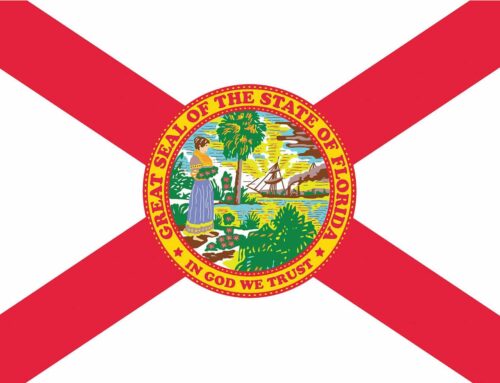Pricing isn’t everything. But if there are some car insurance discounts available from your carrier, or you can get a better price on better coverage from one carrier vs. another, you’d be crazy not to take advantage of it!
Here are 11 great tips on how to get the most value for your money when it comes to car insurance – especially for SR22, FR44, and other high-risk drivers.
Not high risk? Read this anyway, because most of the principles still apply!
1. Go to an independent broker, not a captive agent.
Some insurance agents work for a specific company, and only for that company. They can’t quote you a policy from any other company, and they can’t sell a policy from any other company.
Lots of national brand name insurance companies work this way, including GEICO, State Farm, Allstate are all great examples of companies that sell through a captive sales force of agents that work only with that company.
There are advantages to that model. But they’re mostly advantages to the insurance company. Not you.
As a high risk driver, you should know that there are huge differences in how carriers price your policies. They all assess and price risk in different ways. And major brand name carriers tend to be more conservative and risk-averse. They don’t try to be competitive when it comes to high-risk SR22 drivers and those with recently suspended licenses, moving violations, accidents, bad credit, and other problems.
An independent insurance agent, with an independent brokerage, isn’t limited to a single carrier. We’re free to get appointed with, get quotes, and write policies from any carrier doing business in your state. So our insurance companies have to compete for your business.
By going with an independent insurance agent rather than the captive agent in your local strip mall, or at the massive call center out of state, you have exponentially more choices, and a much better chance of getting the best available rate. And what’s more important, getting the best and most appropriate amount and type of insurance protection.
2. Shop around.
You should get a quote from as many carriers as you can. This is how an independent agent, rather than a captive one, can save you time and money: One phone call can generate apples-to-apples quotes from many different carriers. Your agent will be familiar with the ins and outs of each carrier, and can help advise you on which one may be the best fit for your needs.
You can shop around the name brand carriers, too, going through multiple captive agents. It just takes more time and effort. And you usually don’t get an “apples-t0-apples” comparison. In general, however, the more quotes you can get from great carriers, the better.
3. Get a higher deductible.
If you have any significant savings, or even decent credit, it doesn’t make sense to have a policy with an ultra low deductible. You’re better off buying a policy with the highest deductible you can reasonably afford. Then taking the difference and either buying better coverage (e.g., more liability protection, uninsured/underinsured motorist coverage, bodily injury coverage, and/or property damage coverage), or paying yourself! Take some or all of your savings, and drop the money in your savings account.
Every six months or a year, the additional money you have in your savings can help you afford to raise your deductible again – lowering your premium, and allowing you to save even faster.
Here’s how it works in more detail:
4. Get new quotes every 6 months.
Once you get a DUI or an SR 22 requirement, insurance carriers put you in the “high risk” category. Where you’ll have to pay higher premiums. This is true with just about any carrier.
But every carrier prices risk differently. Some carriers will keep you in the “high-risk” category for years. Other carriers will begin to lower premiums for high-risk drivers after anywhere from six months to two years of safe driving and no more violations or accidents.
So after a year or two, car insurance rates can vary widely between carriers, even for the same driver.
If you have a DUI or other infraction, get your agent to shop around for a new policy every six months or so. Have them get quotes from many different carriers. Not just the ‘name brand’ companies. Note: A captive agent can’t do this for you. Only an agent from an independent brokerage that can represent many different competing carriers can get quotes from many competing insurance carriers.
If you can improve your credit score, move to a different zip code, get a different car, turn 40 years old – all these things can materially affect pricing, and can be very different from one insurance company to another. So shop around once or twice per year, and see if one carrier or another is aggressive about earning your business.
5. Improve your credit score.
Car insurance companies know: People with good credit scores tend to have fewer claims than people with bad credit scores. Carriers in nearly all states routinely do a credit check, and they use your credit information to set car insurance rates. The better your credit score, the better your rates are likely to be.
Only five states prohibit car insurance companies from using credit reports to set rates: California, Hawaii, Massachusetts, Michigan, and Washington. In all other states, you can expect to pay significantly more in premiums if your credit score is below average. According to a study from ValuePenguin.com, the bad credit penalty on car insurance rates averaged 59% nationwide. In some states –Arizona, New Hampshire, and New York, the “bad credit penalty” is over 100%!
To improve your credit score, strive to pay down your credit cards so you’re not using more than a third of your available credit. Get organized and be sure to pay all your credit accounts on time. And don’t close old credit accounts. The older your average credit account, the better your score.
6. Install safety devices and features.
Insurance companies offer varying discounts for cars with safety devices. They vary by carrier, car make and year, and your location. But they can be significant.
What’s more, there’s been a tremendous amount of innovation and technology advances in this field in recent years. It’s not just about installing daytime running lamps, anti-lock brakes, and airbags anymore.
Safety devices and features that may qualify for an insurance discount include:
- Rear view cameras
- Daytime running lamps
- Anti-lock brake systems
- Adaptive cruise control
- Lane keep and lane departure warning systems
- Dual airbags
Remember, though: The most important safety factor in any car is you, the driver!
7. Install anti-theft devices.
Today’s anti-theft devices aren’t limited to locking a “Club” on your steering wheel and a car alarm to wake up the neighbors if someone walks too close on the sidewalk. Today’s advances in GPS technology are making anti-theft devices much more effective. Cars with GPS-enabled devices are much more likely to be recovered after a theft – which dramatically reduces the insurance company’s risk from theft.
OnStar’s “Remote Ignition Block,” lets you lock your engine remotely – preventing a car thief from starting your vehicle.
Some carriers offer discounts of anywhere from 5% to 25% of standard comprehensive coverage rates if you can verify the installation of an effective anti-theft device. The percentage may be lower for higher-risk drivers, since the overall premium is higher. But every little bit helps.
8. Get a package deal.
Some carriers have marketing relationships and other perks with other vendors that may benefit you. For example, if you need to install an ignition lock device in your car, call us today. Our customers qualify for a 25% discount on Intoxalock device rental. Other carriers offer car insurance discounts if you have multiple lines of insurance with the same carrier, such as home and car insurance.
9. Do well in school.
Insurance carriers noticed long ago that good students are usually good drivers, and bad students are more likely to be bad drivers. Yes, correlation isn’t causation. But that’s insurance for you!
That said, some carriers offer insurance discounts if a student on the policy has good grades in school. These discounts may be available if you or someone else on the policy is in high school or enrolled full-time in college, is age 26 or younger, and maintains at least a “B” average.
10. Take a defensive driver course.
Some carriers offer discounts for drivers who complete a defensive driver course – especially if you’re over 50 or so. The discount ranges from 5% to 10%. It’s not much, but the effect is cumulative: It adds up year after year. Add the savings to your sinking fund, so you can eventually afford to increase your deductible. For more savings!
11. Don’t overpay for gap insurance at the dealer.
Gap insurance covers the difference between what you owe on a car and what the car is actually worth. It protects both you and the finance company if you have a wreck while you’re still “upside down” in the car, owing more than the car is worth.
The finance desk at car dealerships try very hard to sell you gap insurance at the closing table. That’s because they know few people will shop around for gap coverage. They charge a ridiculously high premium for this coverage. And they send their finance desk employees to special seminars and training sessions teaching them how to sell it.
They won’t mention that you can buy this coverage directly from your insurance company or from specialty insurance companies not affiliated with the lender – usually for much less money! To find out more about how to save money on gap insurance, click here.
12. Call us today.
At Select, all our agents are high-risk-driver specialists. We deal with people with DUIs, SR22 requirements, reckless driving citations, lapsed insurance histories, bad credit, and other problems every single day. We know the carriers that offer the best policies and terms to high-risk drivers. And unlike the captive insurance agent in your local strip mall, we have the freedom to get quotes and get you into a policy with them.
If you’re with a captive agent, you’ve recently become a high-risk driver, or you’ve been driving with an SR 22 for months, call Select today, and let us shop around.
Click here to get a quote. Or call us directly at (855) 438-7353 to speak to an agent!
See you on the road!
Steve “Mr. Insurance” Ludwig
CEO, Select Insurance Group





